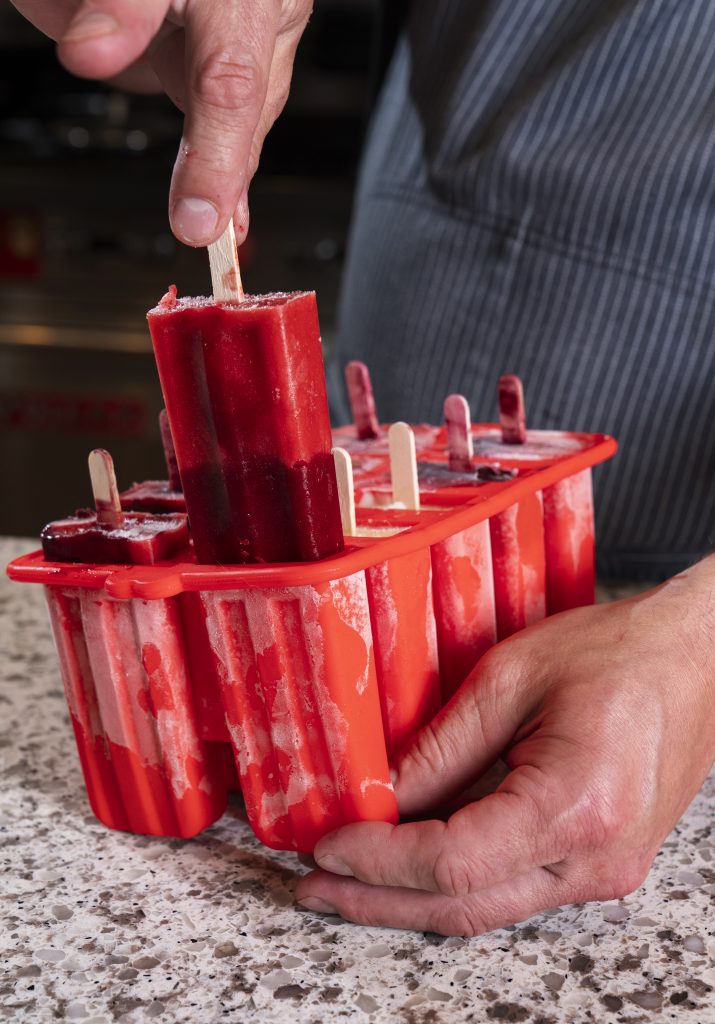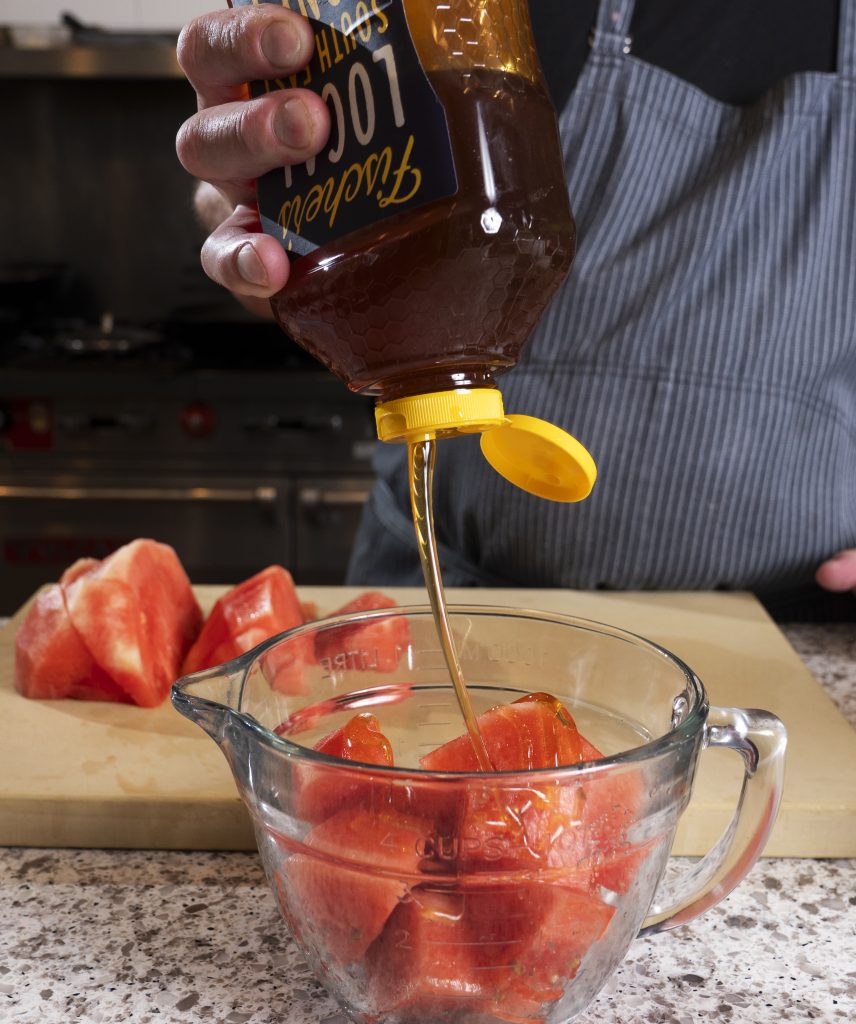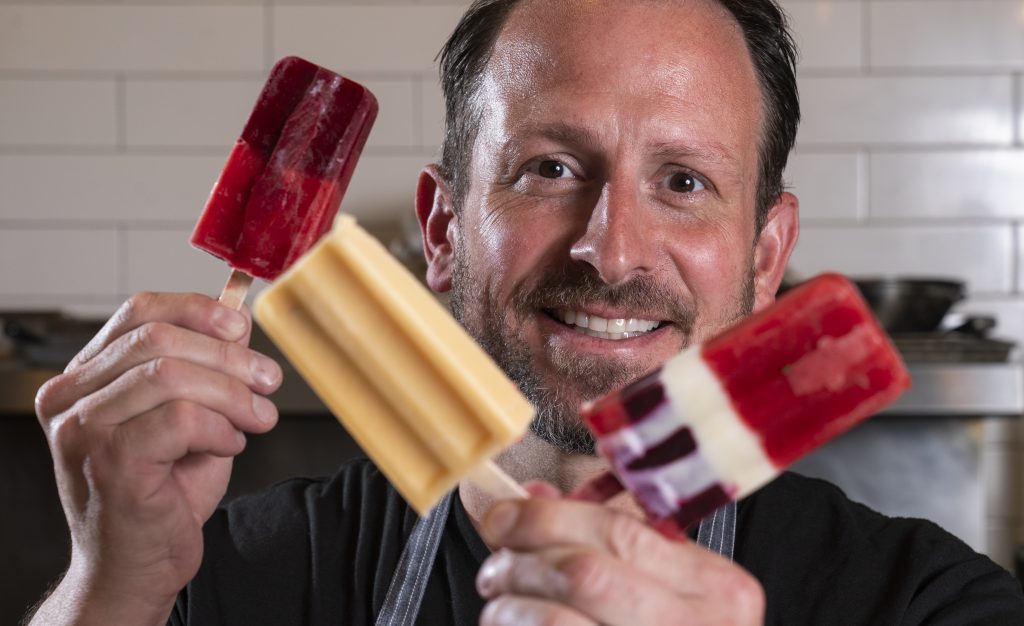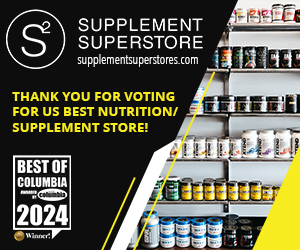It’s hot and getting hotter. You can grab some popsicles that are just frozen sugar water for pennies at the store, spend a little more to get ones with some actual fruit, or spend a little time and make ones with 100% fruit and a combination of delicious flavors that you want to eat. Think about shopping for fruit in season at the farmers market. You get your fill of strawberries, peaches or blueberries, but if you buy some extra, you can have those delicious strawberries months later.
VESSEL
Popsicle molds have come a long way since I was a kid. You can get molds that have reusable handles for the popsicles, molds where you can use your popsicle sticks and then bag them. Or if you want to splurge a little extra, you can get an impulse sealer (most are around $20-$30, they have a hinged arm and a heated white that presses and seals the bag) and use slim vacuum seal bags to make your own push out popsicles which will stay fresh in the freezer much longer. Plus, you won’t have to worry about freezer burn.
FILLING
Here is where the sky’s the limit, almost. You can make just about any combination of fruit, herb, yogurt, nuts, honey or any other ingredient you can think of. The most important part is the taste. Take into consideration, how it tastes before freezing will be subdued once frozen. You want to make sure the flavors pop a little more when in liquid form. Even though it is sweet, a little salt might help bring some flavors forward. Acid is also a great thing to add to help things pop, a little lemon or lime juice works great, as well as a little vinegar, or sumac if you have some available.

WILL IT FREEZE?
If it tastes great, being a little icy might not be an issue. If it won’t freeze, that is an issue. Long ago, while working at a restaurant in New Orleans, we would make sorbet in the summer to go on some of the specialty desserts. Many times, we just had a rough ratio and would use different fresh fruit and produce as it came in. If the mixture did not have enough sugar, it would be icy once we spun it into sorbet. If there was too much sugar, we would just get a cold sweet sauce that would never freeze. I am sure they had a refractometer somewhere to test the sugar content, but I am also sure it would have been broken regularly if they had let us use it. We were taught the floating egg method. You can use a CLEAN raw egg to roughly figure out the density and sweetness of your mixture. An egg will sink in water, but as you add more sugar, the egg will start to float. As the egg starts to break the surface of the liquid, you look at the size that is above water. A dime will yield a frozen product that is not too icy, but just barely sweet. If it gets too much larger than a quarter, you run the risk that the mixture might not freeze at all. The sweet spot seemed to be between the size of a nickel and a quarter. There are other factors to consider (density of the fruit and its cellulose fiber), but this gives you a pretty good idea.
SWEET
Sugar or a simple syrup (equal parts sugar and water, boiled and cooled) will work to sweeten the popsicle, but if you are making them at home, you can go so much deeper and add flavor from your sweetening ingredient as well. Honey, agave syrup, molasses, monk fruit, stevia, maple syrup, sugar or any other sweeteners can be used. Some may take a little heat to dissolve while others may just need to be whisked to be incorporated.

FLAVOR COMBOS
Each month will come with a new batch of fresh produce. Don’t feel tied to fruit, some of my favorite combinations have had vegetables or herbs. Here are some combinations, but don’t take my word for it. Sometimes things that grow together, go together.
STORAGE
Once the popsicles are frozen, it is best to keep them in a sealed bag (or if you are using a bag, it is already in one). A zip- closure bag or bag sealed with the impulse sealer will do the trick. The popsicles can be stored for a month or two in the freezer. Longer than that, you run the risk of getting freezer burn. Popsicles in a bag can be stored for much longer.



















